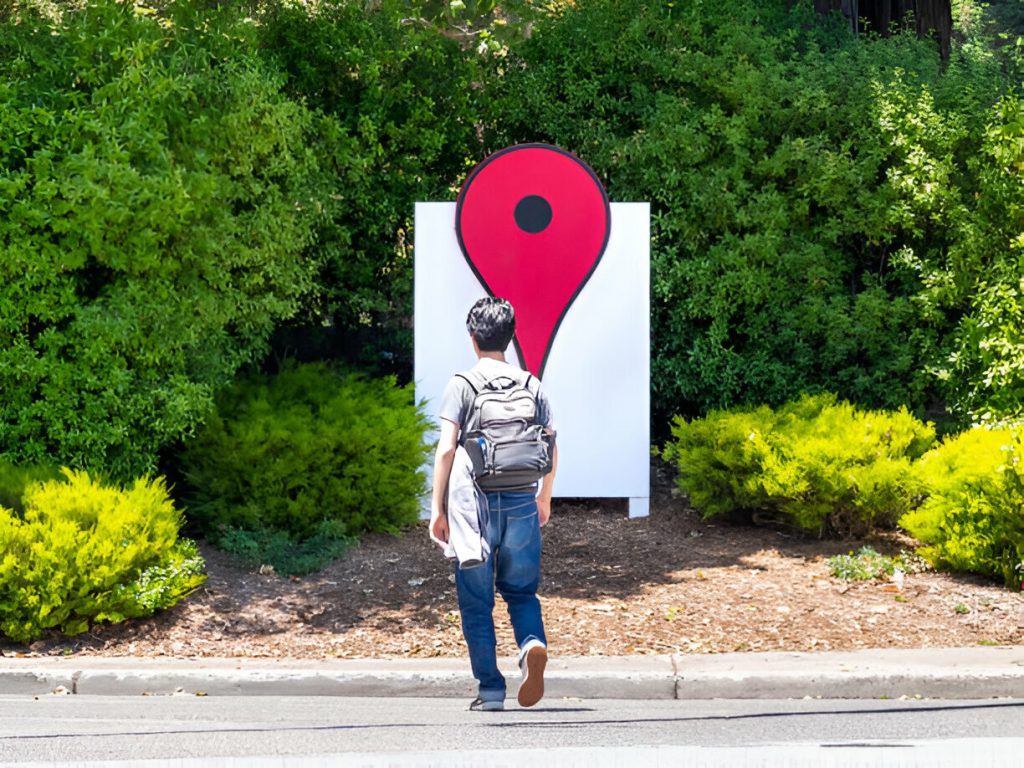Google Maps has fundamentally transformed the way we navigate and interact with the world around us. Since its inception, Google Maps has evolved from a simple mapping tool to a sophisticated platform that impacts various aspects of our daily lives. This article explores the profound impact of Google Maps on a global scale, delving into its role in revolutionizing navigation and transportation, enhancing local business visibility, facilitating urban planning and development, promoting environmental sustainability, addressing challenges and controversies, and outlining future innovations and trends in mapping technology.

Introduction to Google Maps
Google Maps has become a household name when it comes to digital mapping and navigation services. From humble beginnings to a global phenomenon, let’s explore the evolution and key features of this indispensable tool.
Evolution of Google Maps
Google Maps started in 2005, offering users a way to explore the world digitally. Over the years, it has evolved from a basic mapping tool to a comprehensive platform that revolutionized how we navigate and interact with our surroundings.
Key Features and Functionality
With features like real-time traffic updates, Street View, and offline maps, Google Maps has set the standard for mapping services. Its user-friendly interface and accurate directions make it a go-to tool for millions around the world.
Revolutionizing Navigation and Transportation
Google Maps isn’t just about finding the quickest route from point A to point B. It has transformed the way we travel, impacting both individual commuters and public transportation systems.
Improving Travel Efficiency
By providing detailed route options, alternate routes, and estimated arrival times, Google Maps has made navigation more efficient than ever. Commuters can now make informed decisions on the go, saving time and reducing stress.
Impact on Public Transportation Systems
Google Maps has also revolutionized public transportation planning. Users can access schedules, routes, and even real-time updates for buses, trains, and subways, leading to increased ridership and improved overall transit experiences.
Enhancing Local Business Visibility
For businesses, Google Maps is more than just a navigation tool – it’s a powerful marketing and visibility tool that can drive foot traffic and boost sales.
Utilizing Google Maps for Marketing
Businesses can leverage Google Maps to showcase their locations, hours of operation, contact information, and even customer reviews. This visibility can attract new customers and enhance brand credibility.
Driving Foot Traffic and Sales
With features like local search ads and location-based promotions, businesses can reach nearby customers actively looking for products or services. Google Maps helps bridge the gap between online discovery and offline sales.
Facilitating Urban Planning and Development
Beyond individual users and businesses, Google Maps plays a vital role in urban planning and development, contributing to the creation of smarter and more efficient cities.
Urban Mapping Applications
City planners and developers use Google Maps to analyze traffic patterns, identify infrastructure gaps, and plan for future growth. Accurate mapping data helps prioritize projects and improve overall urban design.
Integration with Smart City Initiatives
As cities embrace smart technology and data-driven solutions, Google Maps serves as a crucial tool for integrating various systems. From optimizing transportation networks to enhancing emergency response, it’s a key player in building the cities of tomorrow.
Promoting Environmental Sustainability
Google Maps isn’t just about getting you from point A to point B—it’s also helping the planet breathe a little easier. By providing efficient routing options, Google Maps helps drivers reduce carbon emissions by finding the shortest and most eco-friendly routes to their destinations. This not only saves users time but also contributes to a greener, more sustainable environment.
In addition, Google Maps supports green initiatives by providing mapping data that can be used to track environmental changes, plan conservation efforts, and promote eco-friendly practices. From mapping out bike lanes to highlighting public transportation options, Google Maps is playing a vital role in promoting environmental sustainability around the world.
Challenges and Controversies Surrounding Google Maps
While Google Maps has revolutionized the way we navigate the world, it hasn’t been without its fair share of challenges and controversies. Privacy concerns and data security issues have been raised regarding the collection and usage of user data by Google Maps. Users have questioned the extent to which their location information is being tracked and shared, raising valid concerns about privacy in the digital age.
Additionally, Google Maps faces criticism for its market dominance and competition practices. Some argue that Google’s strong grip on the mapping technology market may stifle competition and limit innovation in the industry. These challenges highlight the need for continued scrutiny and regulation to ensure fair and ethical practices in the mapping technology sector.
Future Innovations and Trends in Mapping Technology
As technology continues to evolve, so does the future of mapping technology. One exciting trend on the horizon is the integration of augmented reality (AR) in navigation. Imagine being able to see real-time directions overlaid on the world around you through your mobile device or smart glasses. Augmented reality has the potential to revolutionize the way we navigate and interact with our surroundings, making for a more immersive and intuitive mapping experience.
Another emerging trend is the integration of Google Maps with the Internet of Things (IoT) for real-time data insights. By connecting mapping technology with IoT devices like sensors and smart appliances, Google Maps can provide users with up-to-date information on traffic conditions, weather patterns, and even parking availability. This integration not only enhances the accuracy and reliability of mapping data but also opens up new possibilities for smart city development and resource management. As mapping technology continues to advance, the future looks bright for even more innovative and practical applications in the world of navigation.In conclusion, the influence of Google Maps on the world is undeniable, shaping how we move, discover, and connect with our surroundings.
As we continue to witness the ongoing advancements and applications of mapping technology, it is evident that Google Maps will remain a powerful tool with far-reaching implications for society, business, and the environment. Embracing these innovations, challenges, and opportunities, Google Maps continues to leave a lasting impact on our lives, setting the course for a more interconnected and efficient future.
FAQ
How does Google Maps benefit local businesses?
Google Maps benefits local businesses by providing them with visibility to potential customers. Through features like Google My Business, businesses can create profiles, update information, and interact with customers, improving their online presence. Additionally, Google Maps offers advertising opportunities through location-based ads, helping businesses target relevant audiences in their area.
What are some potential privacy concerns associated with using Google Maps?
Some potential privacy concerns associated with using Google Maps include location tracking, data collection, and potential misuse of personal information. Google Maps tracks users’ locations to provide accurate navigation and location-based services, which can raise concerns about privacy and data security. Users should be cautious about sharing sensitive information and review their privacy settings to control how their data is used.
How is Google Maps contributing to environmental sustainability?
Google Maps contributes to environmental sustainability by promoting alternative transportation options and reducing carbon emissions. Features like biking and walking directions encourage eco-friendly modes of transportation, reducing reliance on cars. Additionally, Google Maps provides information about public transportation routes and schedules, facilitating the use of mass transit systems, which can help decrease traffic congestion and air pollution.
What are some upcoming innovations in mapping technology that users can expect to see in Google Maps?
Some upcoming innovations in mapping technology that users can expect to see in Google Maps include improved augmented reality (AR) features, enhanced indoor mapping, and real-time location sharing. AR navigation overlays digital information onto the real world, making it easier for users to navigate unfamiliar environments. Enhanced indoor mapping will provide detailed maps of indoor spaces like malls and airports, improving navigation in complex buildings. Real-time location sharing features will allow users to share their location with friends and family in real-time, enhancing safety and convenience.
